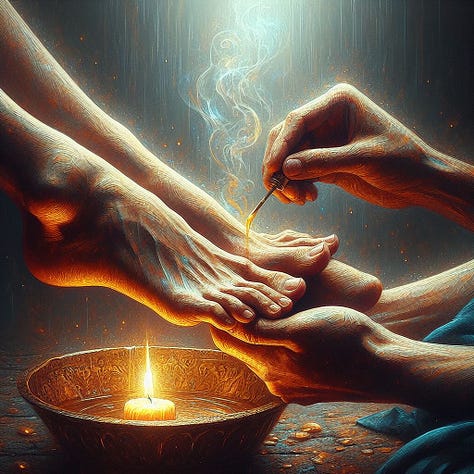Anointing Love
Anointing holds a unique place among Christian rituals. It stands unencumbered by the heavy theological baggage of baptism and eucharist. Unlike these, anointing carries fewer stereotypes, particularly those tied to gender and priesthood. This openness allows for fresh experiences and interpretations, a window of opportunity for spiritual growth.
Reflecting on a reenactment of Mary Magdalene's anointing of Jesus, we witnessed a profound transformation. As Mary knelt before Jesus, anointing his feet, and then Jesus, in turn, knelt before her, anointing her feet, something shifted within us. The ritual was not just an act; it was a moment of love, healing, and a deep reconnection with the feminine aspect of spirituality.
This mutual anointing reverberated with themes of love, healing, and a profound sense of dying to our old selves. It was a moment of reconciliation, a rebirth into wholeness. We felt the tenderness of a transformed love, one that softens even the hardened heart of institutionalized religion.
The words from Ezekiel echo in our minds, "I will remove from your body the heart of stone and give you a heart of flesh" (Ezekiel 36:26). Mary Magdalene's healing vocation to contemporary Christianity seems embodied in this promise. Anointing becomes the vessel through which this transformation can occur.
As we delve deeper into the layers of this sacrament, exploring its capacity for healing, for marking passages through life and death, and for celebrating the unity of souls, we rediscover the essence of our faith. Our Christianity grows stronger as we embrace the rituals that embody our renewed understanding of wholeness.







